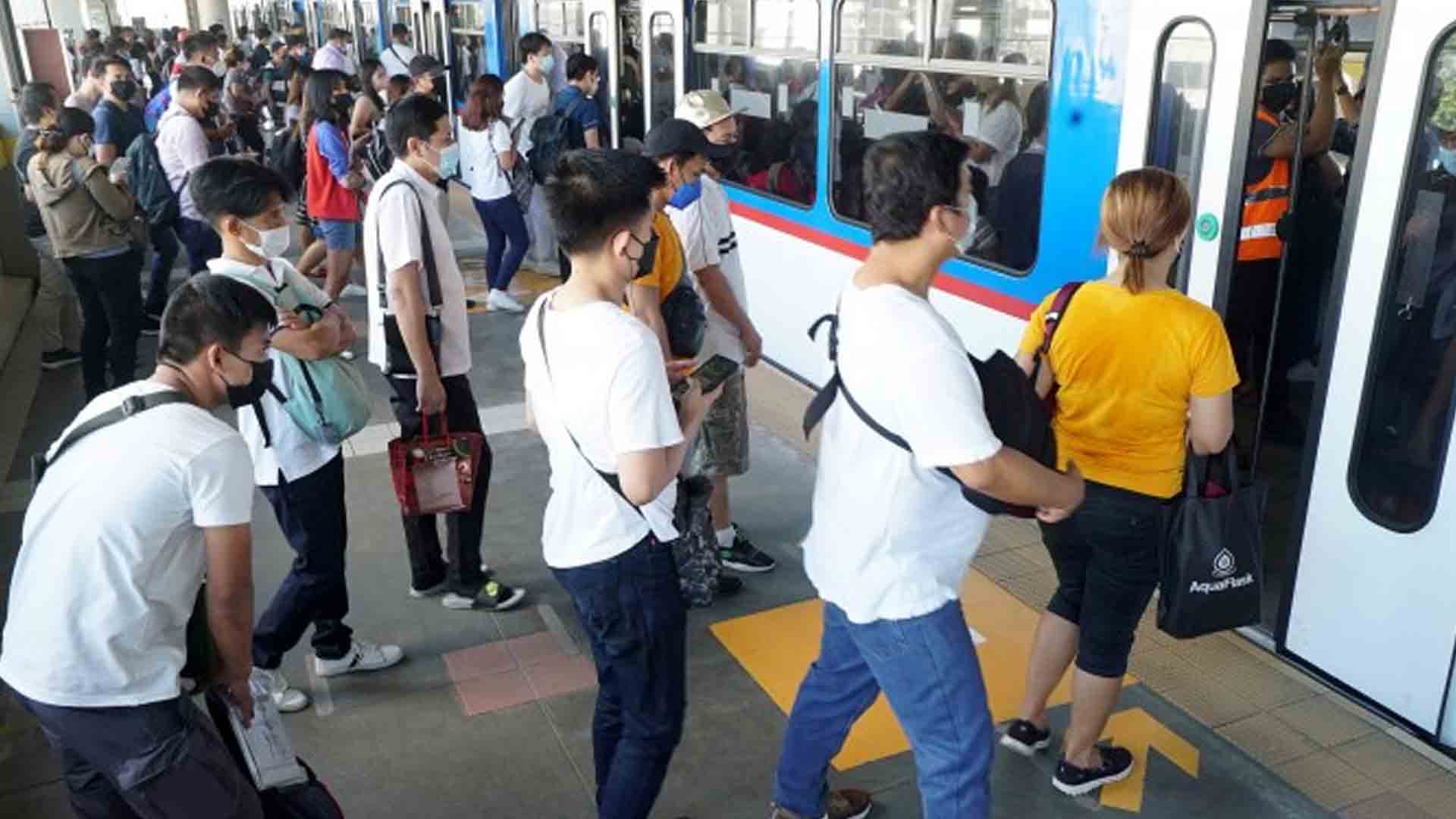A total of 320,844 passengers have taken a ride aboard the Metro Rail Transit Line 3 (MRT-3) on Wednesday, higher than the pre-pandemic average of around 250,000 to 300,000 passengers per day in March 2020.
In a Facebook post on Thursday, the MRT-3 said Wednesday’s ridership is also the largest number of passengers the MRT-3 has served in a single day since it resumed operation amidst the Covid-19 pandemic in June 2020.
“Ito ay resulta ng pagpapatupad ng libreng sakay sa MRT-3 at pagpapatakbo ng mas maraming train set (This is the result of the MRT-3’s free ride program and having more trains running),” the MRT-3 said.
To date, there are 19 three-car Czech-made CKD trains and two four-car CKD trains running at the MRT-3 during peak hours.
Each three-car trains are capable of carrying a maximum of 1,182 passengers at any given time, while the four-car trains can carry up to 1,576 passengers.
Since the completion of the MRT-3’s rehabilitation, its trains are now running at 60 kilometers per hour (kph)—reducing the headway or wait time between trains from 8.5 to nine minutes to 3.5 to four minutes.
Emergency, crisis management planning
To ensure the safety of its passengers and workers, the MRT-3 has also organized tabletop exercises on what to do during security-related situations such as bomb-related threats, active shooting, and fire-related incidents on Thursday with emergency response teams from the government.
The event included an orientation and discussion on crisis and emergency situations as well as crisis management planning.
During the event, the MRT-3’s Safety and Security Unit was joined by the Philippine National Police at Quezon City and Pasay City, the Bureau of Fire Protection, the Metropolitan Manila Development Authority, and the Office for Transportation Security. (PNA)







